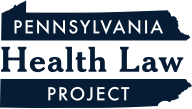Health Provisions in the Build Back Better Act
The Build Back Better Act, adopted by the House of Representatives on November 19, 2021 with the support of President Biden, includes a broad package of health, social, climate change and revenue provisions. The Senate is now considering the legislation, although Senator Joe Manchin III, the West Virginia Democrat, dealt a potentially fatal blow to the Act, a day after the Senate recessed for the year, when he said he was convinced the spending and tax cuts in the $2.2 trillion legislation will exacerbate inflation. This article summarizes some of the provisions that would dramatically strengthen and expand both public and private health insurance coverage. The version of Build Back Better that passed the House will likely be modified as it moves through the Senate. Using recent analysis of the Act from the Kaiser Family Foundation, we highlight some of the key health provisions:
Closing the Medicaid Coverage Gap
The Build Back Better Act would change the ways low-income people get health insurance, especially the 2.2 million uninsured people living in the 12 states that have not expanded Medicaid under the Affordable Care Act (ACA). Readers may recall that Pennsylvania already expanded Medicaid in 2015 and that outcome resulted in coverage for nearly one million Pennsylvanians (991,220 as of September 2021) who had previously gone uninsured. But some states (e.g., Georgia, North Carolina, Tennessee, Texas) remain unwilling to change.
If passed, the Build Back Better Act would temporarily close the Medicaid coverage gap by extending Marketplace subsidies below the poverty level in non-expansion states to adults. In states, like Pennsylvania, that have already adopted the expansion, the legislation would increase the federal match rate from 90% to 93% from 2023 through 2025 to encourage states to maintain their Medicaid expansion status.
Maternity Care and Postpartum Coverage
If passed, the Build Back Better Act would require states to extend Medicaid postpartum coverage from 60 days to 12 months, ensuring continuity of Medicaid coverage for postpartum individuals in all states. Readers may recall that in August, Acting Secretary of the Pennsylvania Department of Human Services Meg Snead announced that Pennsylvania plans to extend postpartum coverage to 12 months in the spring of 2022 as part of the provisions in the American Rescue Plan and this planning appears to still be on track. The Build Back Better Act would also create a new option for states to coordinate care for Medicaid-enrolled pregnant and post-partum individuals through a maternal health home model. States that take up this option would receive a 15% increase in FMAP for care delivered through maternal health homes for the first two years. States that are interested in pursuing this new option can receive planning grants prior to implementation.
Medicaid Home and Community Based Services
The Build Back Better Act would create the Home and Community Based Services (HCBS) Improvement Program, which would provide a permanent 6 percentage point increase in federal Medicaid matching funds for HCBS. To qualify for the enhanced funds, states, like Pennsylvania, would have to maintain existing HCBS eligibility, benefits, and payment rates and have an approved plan to expand HCBS access, strengthen the direct care workforce, and monitor HCBS quality. The Act includes some provisions to support family caregivers. In addition, the Act would include funding ($130 million) for state planning grants and enhanced funding for administrative costs for certain activities (80% instead of 50%).
The Build Back Better Act would also provide $1 billion in grants to states, community-based organizations, educational institutions, and other entities by the Department of Labor Secretary to develop and implement strategies for direct service workforce recruitment, retention, and/or education and training. And the Act would provide $20 million for HHS and the Administration on Community Living to establish a national technical assistance center for supporting the direct care workforce and family caregivers.
What’s Ahead
These are just some of the health care provisions in the Build Back Better Act. There are many others (e.g., Medicare Hearing Benefit, Lowering Prescription Drug Prices and Spending, Paid Family and Medical Leave). The Act is also likely to significantly change the schedule and process for unwinding the continuous coverage provision and resuming normal Medicaid operations and has several protections to prevent arbitrary coverage terminations.
Again, the Build Back Better legislation is not final and may change. Readers that are supportive of these provisions should contact Senators Casey and Toomey.
PHLP will keep you updated and will share more details in future publications.
